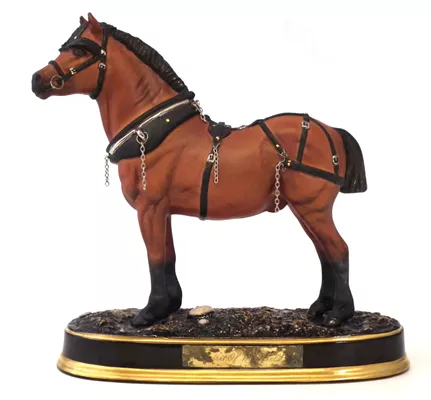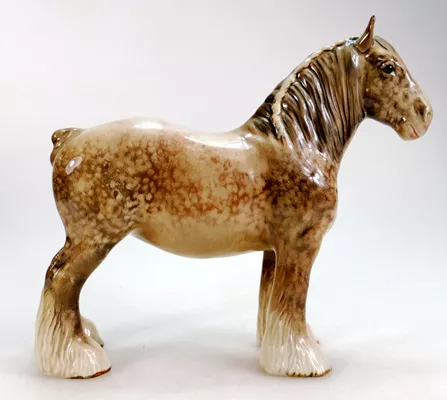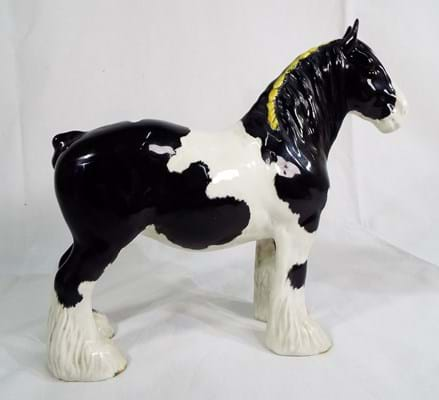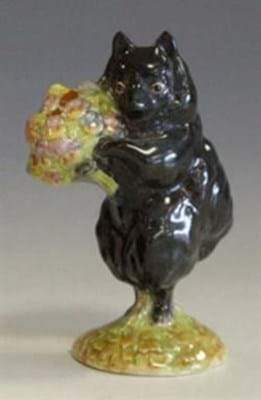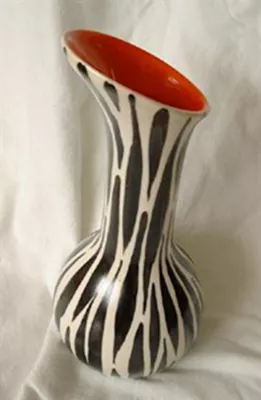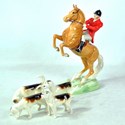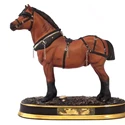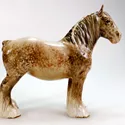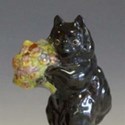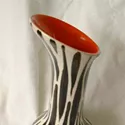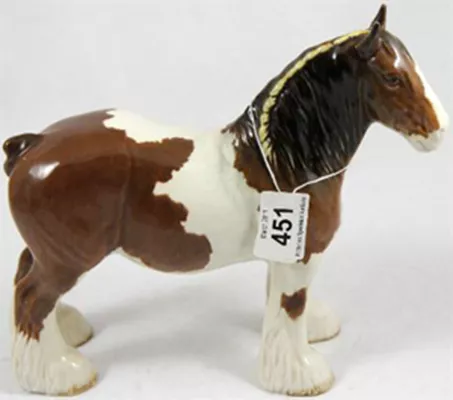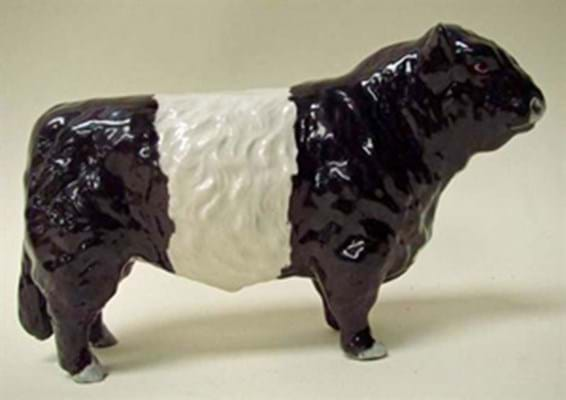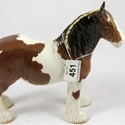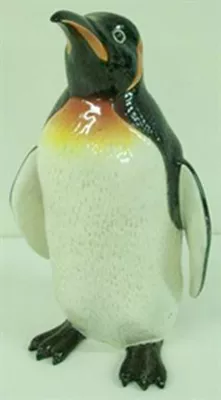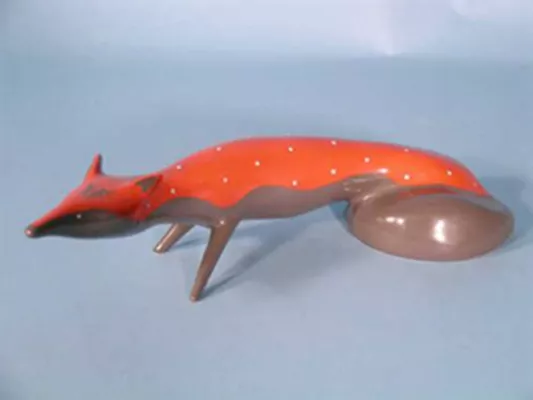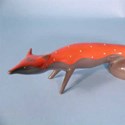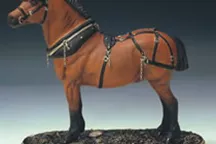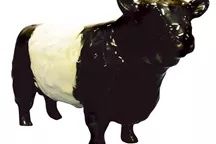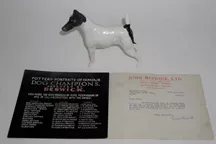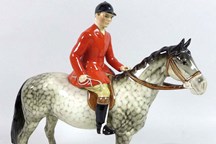Established in 1894 at Longton, Stoke-on-Trent by James Wright Beswick and his sons John and Gilbert, the Beswick Pottery first made its name producing affordable tablewares and ornaments.
It was not until the 1930s (and specifically the introduction of a high fired bone china in 1934), that the firm turned to the animal modelling that would be their stock-in-trade for the rest of the century.
The John Beswick factory was sold to Royal Doulton in 1969 and would finally close in 2002 - but not before the Beswick Collectors Circle has been formed in 1985.
More recently in 2005, a company called John Sinclair (Sheffield) Ltd have been producing pieces carrying the Beswick name.
What Do People Collect?
The cheap and cheerful table and ornamental wares that were Beswick's stock-in-trade for so many years remain very affordable. There is a small following for Beswick's Art Deco-styled jugs and vases, and fruit and vegetable decorated leaf dishes, but prices in the £5-£50 bracket are the norm.
It is a reflection of collecting taste that the firm's range of 1950s wares, such as the Zebra pattern, will today command more attention than older pieces. But in financial terms, the Beswick collecting field is dominated by animal figures.
The 1930s saw the start of the shape numbers and backstamps that help in the easy identification of Beswick wares. The same period also saw the arrival of Beswick's finest modeller.
Arthur Gredington, who was appointed chief modeller in 1939, found inspiration across the animal kingdom from cats and kittens to butterflies and leaping fish. But he is best known as a prolific modeller of horses (he created more than 130 different equine models) while his reproductions of champion stock were particularly admired in the farming community which became an important market for the factory.
Realism and accuracy were key to their appeal: as the desirable characteristics of Hereford cattle changed over time so did Gredington's models of the breed.
Some were in production for many years. Lesser known breeds, such as Galloways, had shorter runs and consequently rank high on the most-wanted list.
Beswick animals are traditionally divided into half a dozen categories - and often collectors will choose to focus on one. These are: birds (covering a wide range from comic models to wall plaques to the precise realism of the Peter Scott Wildfowl collection); cats and dogs (many of the champion breeds modelled by Gredington were in production for four decades); farm animals (the most popular collecting area); fish (sophisticated models that have proved vulnerable to damage); horses (there are over 150 different models and many colour variations from rocking horse grey to palamino) and wild animals (a vast range from the comical to the naturalistic).
Added to these are the surprisingly avant garde models by Colin Melbourne - the so-called CM series of the late 1950s - that have long polarised opinion in the collecting community. As cutting edge as Gredington was traditional, Melbourne is today much admired by the 'Festival of Britain' generation.
Also staples of today's Beswick collecting field are the storybook figures. In 1948 the company began producing characters from the Beatrix Potter books - an immediate success that led to a number of similar ranges notably the Disney, the Winnie the Pooh and the Alice in Wonderland figures.
The Market
The early days of Beswick collecting were times when information on range and rarity was very hard to come by. Embryonic interest was confined to those who had collected Beatrix Potter figures since childhood, livestock owners and the enthusiasts behind the Beswick Collectors Circle.
While it was expressly excluded from some of the more elitist Doulton fairs, a small number of dealers had also began to specialise in Beswick, or at least displayed some pieces alongside their predominantly Doulton stock.
The market really opened up to enthusiasts in a panoply of English-speaking countries after study of the factory records (the Royal Doulton archive yielded a number of pattern books and price lists going back to 1960) and the publication of the first 'price guide'.
The 1987 Beswick Collectors Handbook by Harvey May was the first time a complete list of all the Beswick figures, birds and animals had appeared in print. Many more would follow with information regarding decoration, modelling and backstamp variations - and the quiet realisation that these elements held the keys to rarity and desirability.
By the onset of the 21st century, Beswick livestock and bloodstock models ranked among the star performers in the collectable ceramics market. Aided by a proliferation of books and guides and an enviably large collecting base that included a loyal following within nostalgic farming communities, prices saw a dramatic acceleration between 2000 and 2005.
Prices three times those paid a decade previously were not uncommon and collectors were prepared to overlook damage to acquire scarce models.
Perhaps, inevitably, these heady days that encouraged the sale of many collections that had become a security risk or at least prohibitively expensive to insure, did not last.
As some rationale returned to the market, prices fell back to more sensible levels and, since around 2010, have been running at about half of the peak levels. Buyers today are much more condition-conscious but there is still a good following for the most desirable issues.
Prices start from just a few pounds (eBay is still a good place to buy) and rise to thousands of pounds for rare models or colours. The many price guides are useful in identification but they are only guides. As a general rule, common figures will command prices below 'guide' values - the rarest figures may generate competition above notional guidelines.
Pointers To Value
From flamingo wall plaques to an outsize 'fireside' model of the popular penguin series, there are rarities in all subject areas. Some models were simply made in small numbers. Others are rare only in certain colours (the emergence of a model in 'trial' colours will always excite collectors) or in glaze variations (some figures were available in either matt or gloss finishes).
Ironically the more commercially successful the model the less valuable it will probably be (as a general rule, chestnut brown horse models are common and therefore not as expensive as others) but even among easy-to-find figures collectors will make distinctions.
Generally older models exhibit more mould detail and better colouring.
Certainly some collectors of Beatrix Potter figures only look for those with the pre-1971 'gold' mark (replaced by the 'brown' mark a couple of years after Beswick were taken over by Royal Doulton in 1969), believing them to be superior.
Perhaps the rarest of all Beswick's output is the Spirit of Whitfield.
Modelled in 1987 by the studio's latter day chief designer Graham Tongue, it depicts a pit pony called Kruger who retired from the Chatterley Whitfield colliery in 1931. A run of four (or possibly five) was made to mark a royal visit to the colliery in 1987.
The original was presented to the Princess Royal, a second sold for £2750 in a 1994 auction and a third at Bonhams in 2003 for a record £9500. The most recent auction appearance of the Spirit of Whitfield was at Peter Wilson of Nantwich in May 2005 when one sold for £8500.
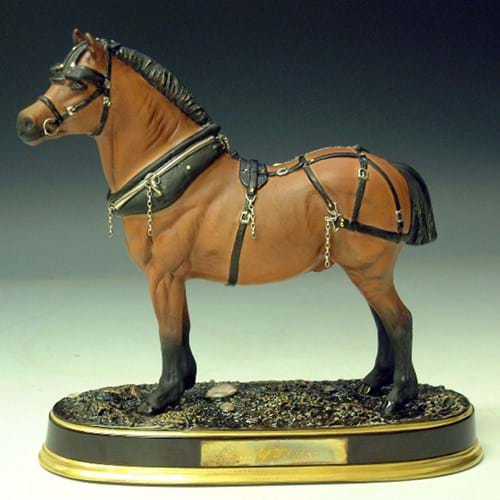
The Spirit of Whitfield, a 1987 design by Graham Tongue, is considered the rarest of all Beswick models. An example, one of perhaps five, appeared at Peter Wilson of Nantwich in September 2017 and was knocked down at £4700, while this example sold for £8500 at the same saleroom in May 2005.
Further Reading
Beswick Animal Collectors Price Guide by Patricia Jacobs. ISBN 10: 0955719119
The Beswick Price Guide: Price and Colour Guide to Beswick Pottery Collectables by Harvey May. ISBN-10: 1870703790




